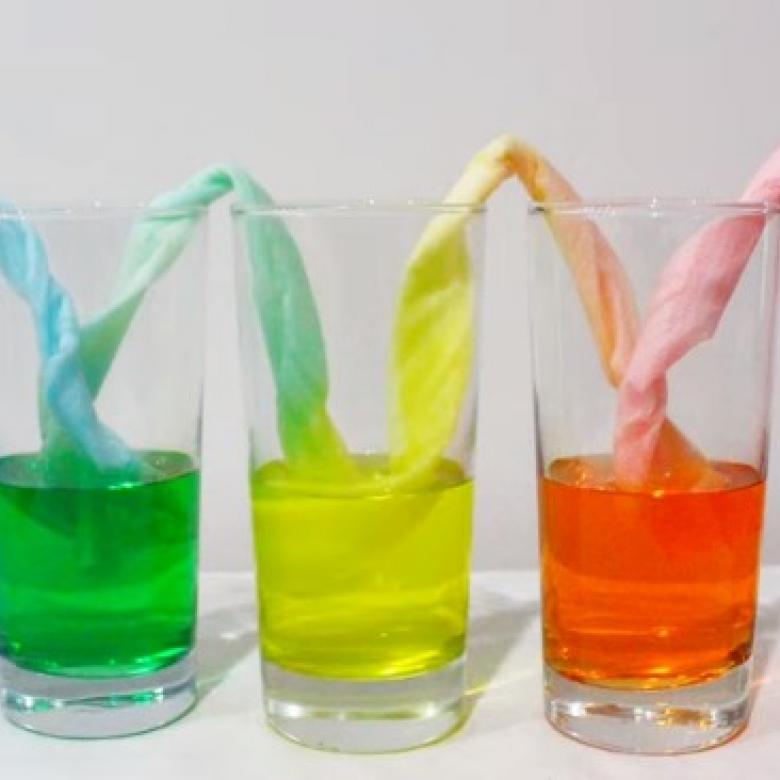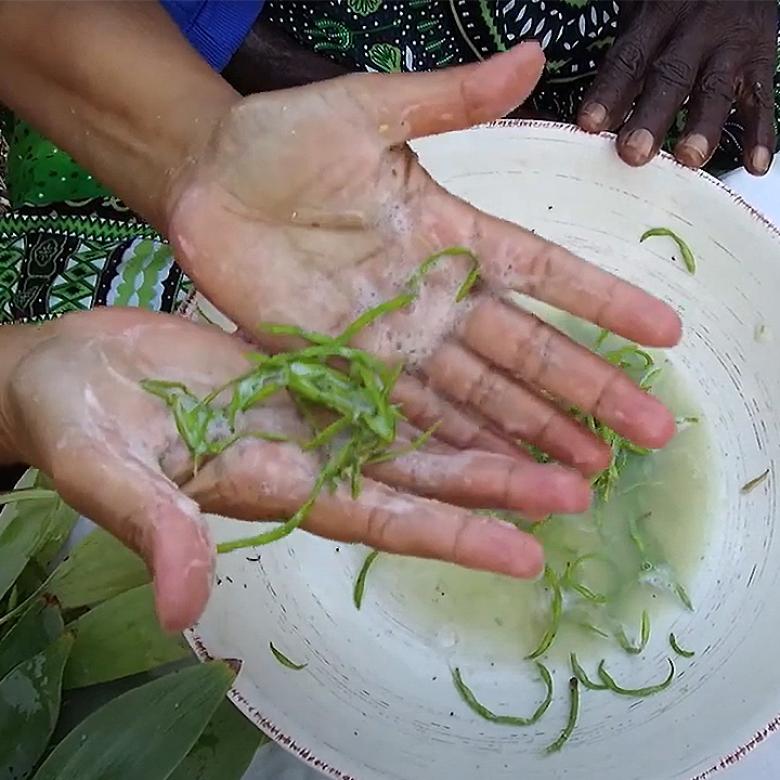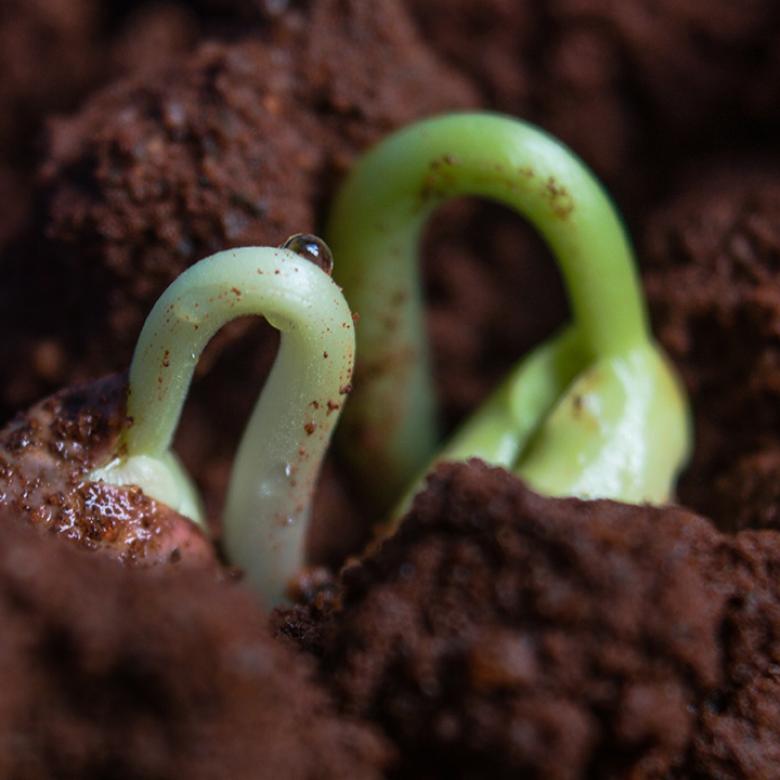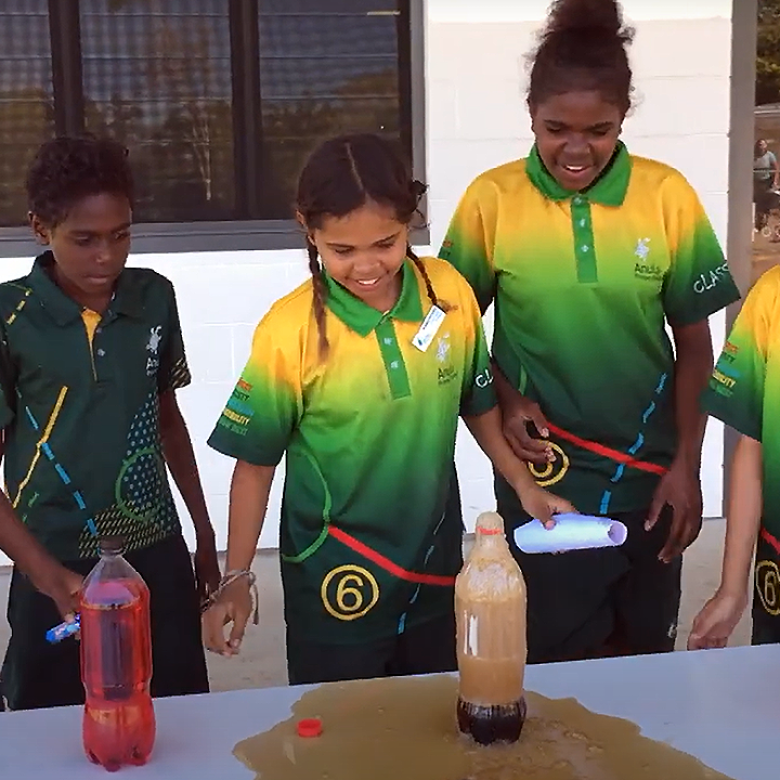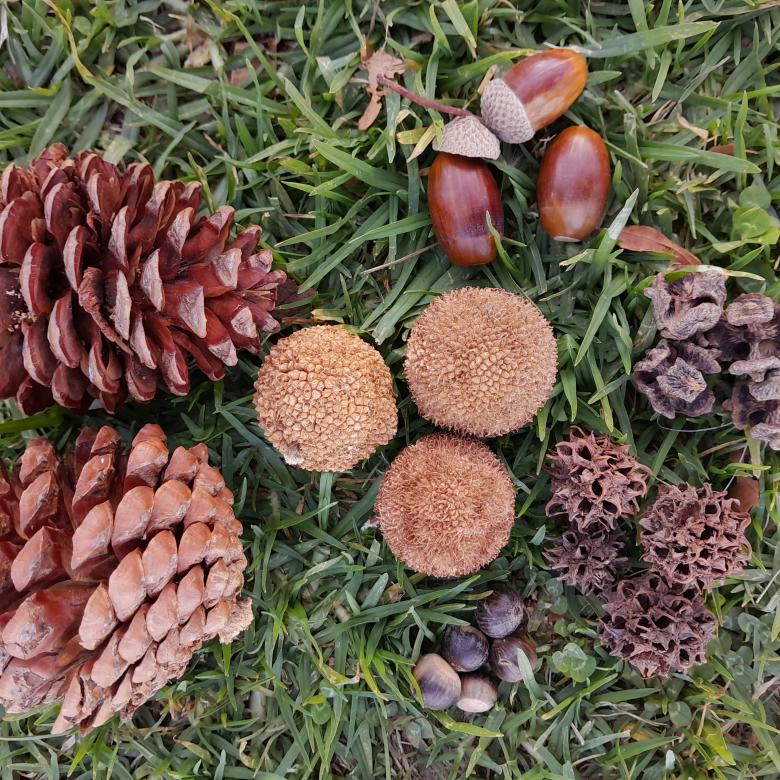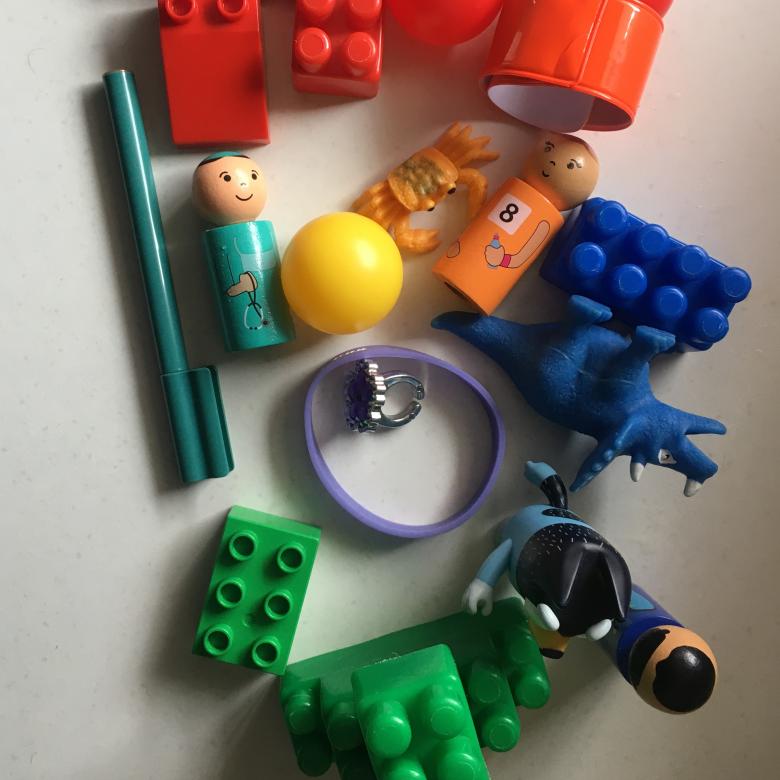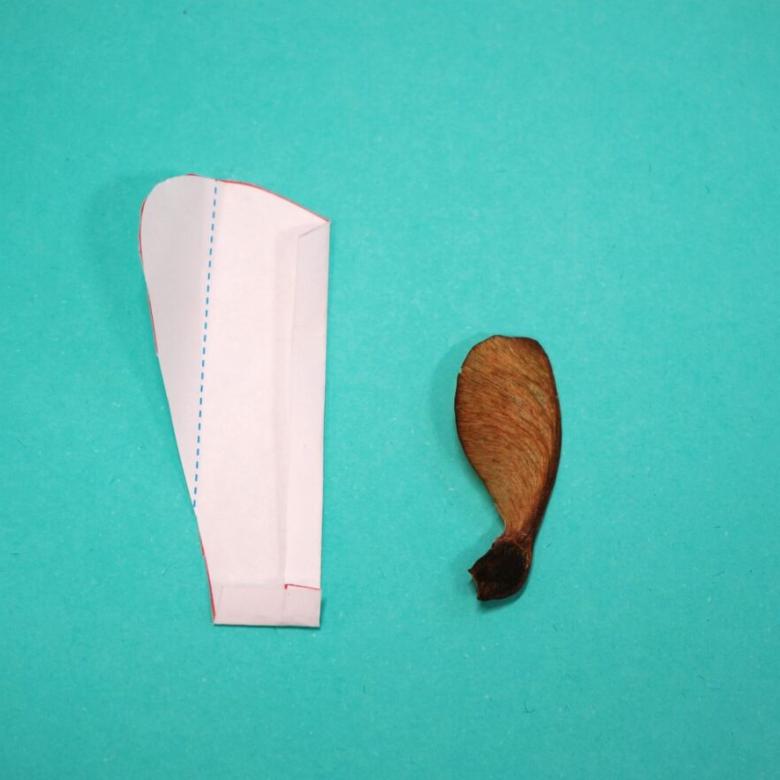You'll need
- 3 to 5 small clear plastic cups
- Water
- Food colouring – several colours
- Some absorbent paper – like paper towel or toilet paper, rolled up or torn into strips
What to do
- Gather your materials on a flat surface.
- Place your plastic cups in a row.
- Put water in every second cup so that they are about three-quarters full.
- Add a different food colour to each cup with water in it.
- Dip one end of a piece of absorbent paper into a cup with water and the other end into the nearest empty cup. Then put another piece of absorbent paper into the empty cup and dip the other end into the next cup with water. Keep creating these bridges between your cups.
- Wait and see what happens.
Questions to ask
Why does the water travel up the paper? Would this work with other liquids? Try using vinegar or vegetable oil instead of water.
How could we make the water move faster? Try using different types of absorbent paper to make your bridges. Which ones carry the water higher, further or faster? Does the water temperature make any difference?
What happens if you use a different type of material for the bridges? Try using a pen refill, or very tightly rolled paper or plastic. Does coloured water move up these bridges?
What happens if you use a flower? Try putting a cut flower in a vase with water dyed with food colouring. Light-coloured flowers work best. Leave it for several days and watch the flower changes colour as the coloured water moves up the stem.
What's happening
In biology, thin tubes or channels are called capillaries. Liquids can be pulled through capillaries by a process called capillary action. But this will only happen if the liquid is attracted to the material of the tube.
If you look closely at water sitting in a drinking glass, you should see a tiny bend in the water surface up the side of the glass. This happens because the water is attracted to the glass surface. It wants to spread out across the glass. But gravity and surface tension pull it down, so the effect is small. (Surface tension happens because the water molecules – the little particles that make up water – want to stick together.) If your glass suddenly became super thin (like 1 mm across), you would have a lot more glass for the amount of water. Then, the effect would get stronger – strong enough to pull the water upwards!
Why does water move up paper? Paper has heaps of tiny channels in it that you can only see using a microscope. Paper is made up of cellulose fibres, which come from wood. Between the cellulose fibres are tiny pockets of air. (This is why a paper towel or tissue feels soft.) Water is very attracted to cellulose fibres, so it rushes up the paper towel to fill these air pockets and get as close to the cellulose as possible. This is capillary action.
Did you know
Have you ever wondered how trees transport water all the way to the leaves at the top? Trees use the same capillary action, just on a huge scale. In a tree, water travels up channels hidden inside the trunk, branches and leaves. Water can reach the top of even the tallest trees.

